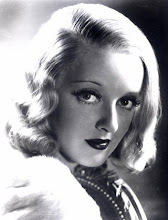...But that's not the exciting thing (even I'm not that Internet-obsessed). The exciting thing is that I'm now officially a Radio/TV/Film major. To celebrate my finally getting off my arse and filling out paperwork, I'm going to get off my arse (though not literally, as I type faster when seated) and write a blog post. 'Bout time.
I loved His Girl Friday the first time that I saw it, but after watching it in class earlier this semester, I found that I have a whole new appreciation for the film since I've also seen its predecessor, The Front Page. The two are nearly identical in places, save for the one small detail of Hildy Johnson's gender. Howard Hawks took quite a risk there, and I have to say it paid off; for once I prefer the remake to the original.
His Girl Friday is known, of course, for it's fast-paced and witty dialogue, which even has the characters talking over each other at times, presenting realistic exchanges that are quite unlike most classical Hollywood films. To balance the speed of the action, Hawks shot the film at a slower pace, using long takes wherever possible to keep the audience from getting overwhelmed. However, he also wasn't afraid to use montage at key points to emphasize, for example, the frenetic mood of the press room after escaped inmate Earl was found hiding in a roll-top desk almost literally under the reporters' noses. The montage editing was also used to quickly recap the action, as each of the reporters gave their own small -- and sometimes false or contradictory -- piece of the story. The varied camerawork keeps the film from looking too much like a staged play, despite the fact that much of it takes place in only one room.

The clever script included a few inside jokes. For example, Ralph Bellemy's character was described as looking like Ralph Bellemy -- personally, I couldn't see any resemblence whatsoever -- and the last man who said he had Cary Grant's character licked was called Archie Leach, which happens to be Grant's real name. Many of the film's jokes had a much darker tone, however, including minor character Molly's suicide attempt being played for laughs. Surprisingly edgy, this movie is a shining example of a black comedy.



I love this film! Their chemistry is just fabulous.
ReplyDeleteiamemmamusic.blogspot.com
This film is in my top ten. I tell my friends about it, and they just look at me with a lost expression. When I read the script, I was amazed at how much dialogue was actually written. One of the tricks with the dialogue was that the first and last words of each character's part we mostly nonsense. The words didn't have to do much with what was said in the middle of the banter, so that the lines can cross over each other and nothing would be lost. I also think it's interesting to see Hawks doing a romantic comedy. Looking at his career is an amazing study since he crossed so many genres and did so well with his films. I just recently found your blog and this is my first comment. Congrats on getting into a film program. I just graduated from one. I'll be looking for your next post.
ReplyDeleteThat's fascinating information about the script. Thanks for sharing it!
ReplyDelete